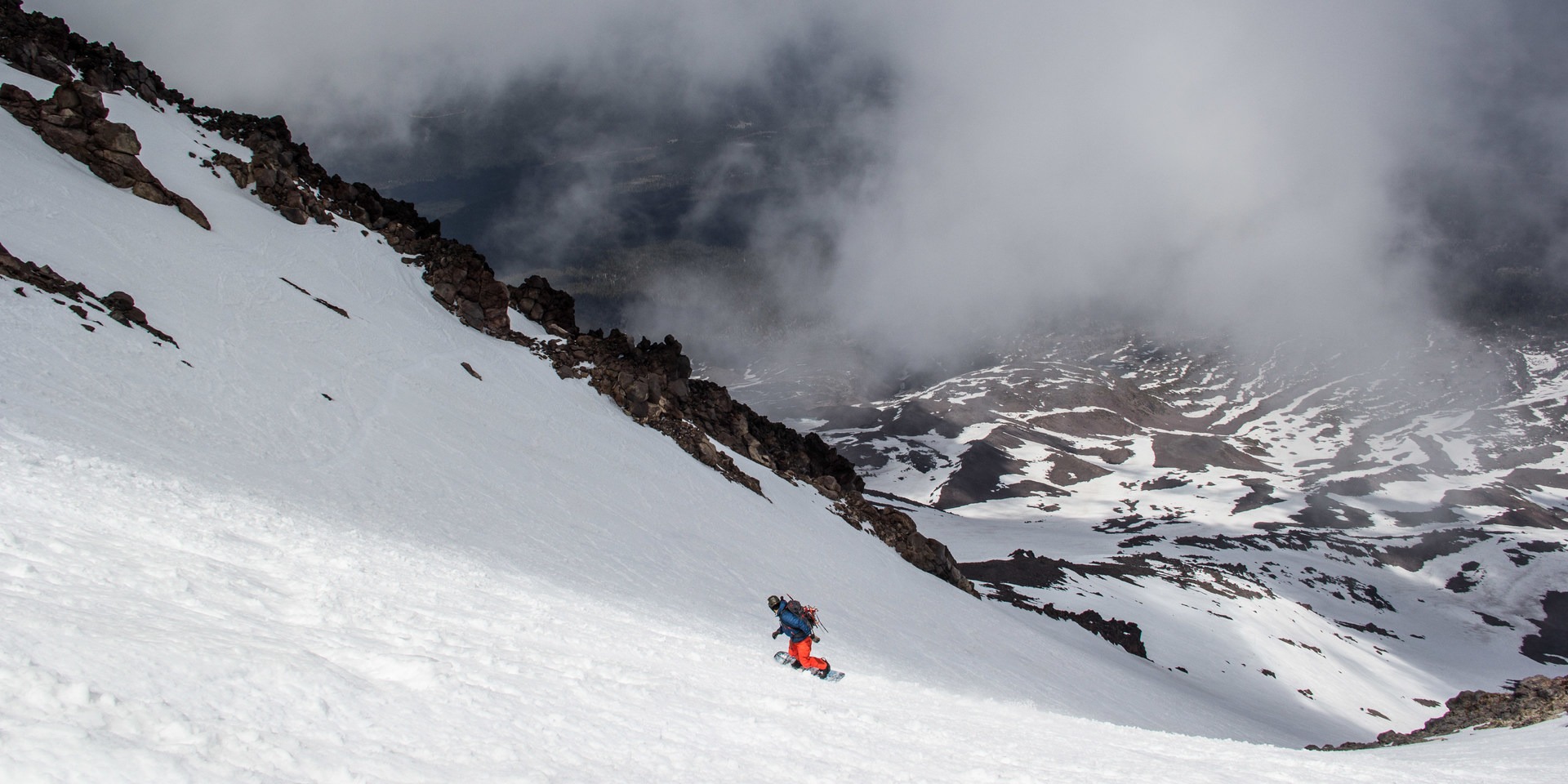You are here
At 14,179 feet, Mount Shasta is home to some of the longest ski descents in California. One of these classics, known as the Hotlum-Wintun Ridge, lies on the mountain’s northeast aspect. With over 4,000 feet of sustained, steep skiing that rolls directly off Shasta's summit and an additional 3,000 feet that is often skiable all the way to your car, the Hotlum-Wintun Ridge is well worth the effort the approach entails.
The Hotlum-Wintun Ridge route doesn’t actually stay on a distinctive ridge; rather, it ascends a large snowfield that lies next to a subtle ridge that separates the Hotlum and Wintun glaciers. Spring, between April and early June, is typically the ideal season to ski the route, when winter avalanche hazard has subsided and Cascade corn snow forms at it's prime. While Hotlum-Wintun Ridge can be climbed and skied in a long day, completing the trip as an overnight affords some advantages, including more time to acclimatize to Shasta’s higher elevations.
The route begins on the eastern side of the mountain at the Brewer Creek Trailhead, located at 7,300 feet. Self-issue wilderness permits are required for overnight stays in the Mount Shasta wilderness, and they are provided at the trailhead along with human-waste packout bags and vault toilets.
Depending on timing, snow may extend below the trailhead, stopping the car short and requiring a short skin up the road. If snow reaches down to the trailhead, skin westward through the treeline toward Shasta’s summit. If the snowline is higher, hike the Brewer Creek Trail along its southward track until you encounter snow. Mark the trailhead with a GPS if this is your first time on the route, particularly if snow extends to the trailhead covering the trail. You won't be able to see the car through the trees on your descent.
With either approach, as you emerge out of the trees, follow the low angled slopes and keep south of the Brewer Creek drainage that is formed by a large moraine. Head for a bench around 9,800 feet. If you are planning on setting up a base camp, this rocky bench area has good sites. An adjacent stream runs just to the north, and it is typically open and flowing by mid-spring. Check with the local outdoor shops or the ranger station on current water availability. If you are climbing earlier in the season, you may want to bring extra fuel to melt snow for water.
The Hotlum-Wintun Ridge route is easily distinguishable from base camp as it heads straight up the large snowfield above the plateau. Skin or climb more than 2,000 feet up the snowfield in the direction of the spine of rocks that divide Wintun Glacier from the large snowfield. The seracs and crevasses of Hotlum Glacier should remain far to the right; the shallow Hotlum-Wintum Ridge to the left. Continue climbing to the traverse at Lunch Rocks, traversing south below a buttress to a wide chute directly above Wintun Glacier.
The route becomes steeper from the traverse, exceeding 40 degrees in some spots. It’s a bootpack from here on out. Climb 2,000 feet of fairly steep terrain, a phenomenal pitch for the descent to come. Continue up the wide chute to the summit. If you have good climbing weather, you’ll likely encounter climbers reaching the summit from Avalanche Gulch, the primary climbing route on Shasta. Lucky for you it’s time to slap on skis or a snowboard for the descent.
The ski descent follows the chute off the summit that you just ascended. You have the option to traverse back to your ascent route at Lunch Rocks and descend into the large snowfield, but a steeper and more consistent pitch drops down the Wintun Glacier. If you choose to descend the Wintun Glacier, inspect and plan your traverse back across the Hotlum-Wintun Ridge to the snowfield above camp. Take care not to drop too far down toward the Ash Creek drainage, or you'll be skinning out. There are typically a couple of navigable snow ribbons that cut across the ridge and connect the Wintun Glacier and the snowfield.
The upper 4,000 feet of consistent, steep corn skiing and the spectacular views and beauty of Mount Shasta make this one of California's best. Enjoy the turns and ski back to camp via the lower section of snowfield.
The Hotlum-Wintun Ridge route is considered Grade II. A rope isn’t necessary, but crampons and an ice ax are a must. Make sure your self-belay and self-arrest skills are up to snuff, as a fall in the upper chute could result in an extremely long and dangerous slide if conditions are icy. Try and time your descent for no later than midday to ensure quality corn snow conditions; if the conditions are too warm, the snow will turn to mush below 12,000 feet.
Summit passes are required for anyone climbing above 10,000 feet on Mount Shasta. They cost $20 and can be purchased at local ranger stations in Mount Shasta City or McCloud during regular business hours, at local outdoor shops, or at the self-issue stations at trailheads and outside the main office of the Mount Shasta Ranger Station. All human waste must be packed out with the designated human-waste bags provided at the trailhead.
If you enjoy ski mountaineering, this is a classic not to be missed.
Additional resources:
Mount Shasta Ranger Station
204 West Alma
Mt. Shasta, CA 96067
530.926.4511
McCloud Ranger Station
2019 Forest Road
McCloud, CA 96057
530.964.2184
The Fifth Season
300 N. Mt. Shasta Blvd.
Mt. Shasta, CA 96067
530.926.3606
Logistics + Planning
Current Weather: Powered by Dark Sky



























Comments
Sign In and share them.